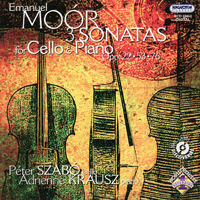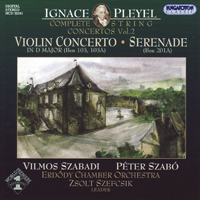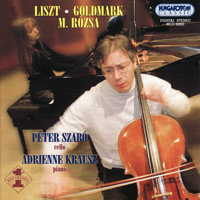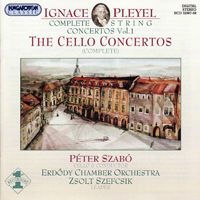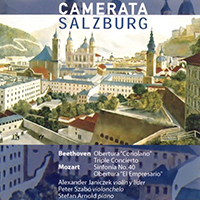Review on the preceding to the concert
A breezy morning, the windows of the MTA ceremonial hall are open, the light pours in horizontally and makes the violins sparkle in blue. The room is basically empty, the orchestra and Péter Szabó are on stage, a couple of people in the auditorium... In the otherwise seemingly endless riverside spring atmosphere, the rehearsal becomes entirely intimate.
An account on the last rehearsal of the Spring Festival concert given by the Württemberg Chamber Orchestra with the participation of Péter Szabó, conducted by Ruben Gazarian.
The piece, Pleyel’s D-major cello concerto, was discovered by Péter Szabó who considers the revival of undeservedly forgotten composers an important section of his life’s work; Moór, Koessler, Mátyás Seiber of course, and now Pleyel. The concertos – as we have been informed by the renowned cellist – successfully became central points of interest at the publisher Boosey and Hawkes’ stand at the Frankfurt Music Fair.
The piece is principally elegant, an inventive fluency characterizes it. Is it great music or only remarkable? Questions like this cannot arise when we allow ourselves get carried away by the music. Intellectual assessment has no function here.
Music of oblivion! Moments, snapshots from the turn of the XVIII-XIX century - to some extent, both periods hide in the lofty curves of melody, and floating harmonies. We might feel the music material an open canvas, almost translucent, but as for its athmosphere and construction, it is rather the open-air identity of the era portrayed which shines from Pleyel’s cello concerto. It is a harmonious, well-balanced vocal chant music, one the listener can really warm to, in our case for the very simple reason that Pleyel himself had an open attitude towards life – at least through music. The composing is always clear-cut, a concise musical process; it is a reliable piece of work – if this word can be used here.
A rehearsal is always a miraculous event, it approaches the listener’s experience from elsewhere. It is at the same time personal and both facile – but from another angle, harder –, while it displays different aspects of the piece to be performed. This is exactly how it happened here. Indeed, the Europe-wide famous Württemberg Chamber Orchestra with conductor Ruben Gazarian was not on top of things at the start. The beginning of the rehearsal showed an uncertain, disintegrating search for sounds, sometimes with semitone mistakes. Naturally, it did not cause too much tension - we were in a rehearsal. Moreover, these events make these moments so memorable. This way we learn that there is interpretation and understanding behind technique. Once unity is achieved, we can see the effect of practice that raises the orchestra to the forefront of European music.
When timing and colours reconcile, different curves and functional ratios are understood, the whole picture becomes more clear – both in sound, character and timing. Gazarian is a conductor with a fine and flexible musicality, whose light playfulness conjures up the forms. During the rehearsal they made the relationship of the corrected surfaces more accurate, found the dimensions of sound and tone. The characters were recognizable at once, but the acoustic spacing, which provides texture to the musical phenomenon, emerged through the counter-balancing, or slimming of the orchestral sound, complementing the acoustical building process. The conductor and Péter Szabó found the proper body of sound for each.
This music is not dramatic, but through some essential funcional points, spreads charm throughout. This makes the music unmistakably special and memorable. The szabóian dramatic character and intensity – does not disturb this. This comes perhaps as a surprise because although transforms into a light and flexibly flooding musicality in the fast movement, it relentlessly emerges in the building-up of the slow movement, thus becoming convincing. Moreover, this strength, merging with the background, reveals the unusually strong love of life evident in the music. These types of musical environments can easily be misunderstood and mocked, in this era.
The underlying force makes the otherwise charming and light athmosphere serious. On Sunday morning I heard both seriously taken delight and plausible oblivion at the rehearsal of the Württemberg Chamber Orchestra and Péter Szabó.
Domonkos
Translation by Susan Kapás
Hangszer és Zene
March 2007











